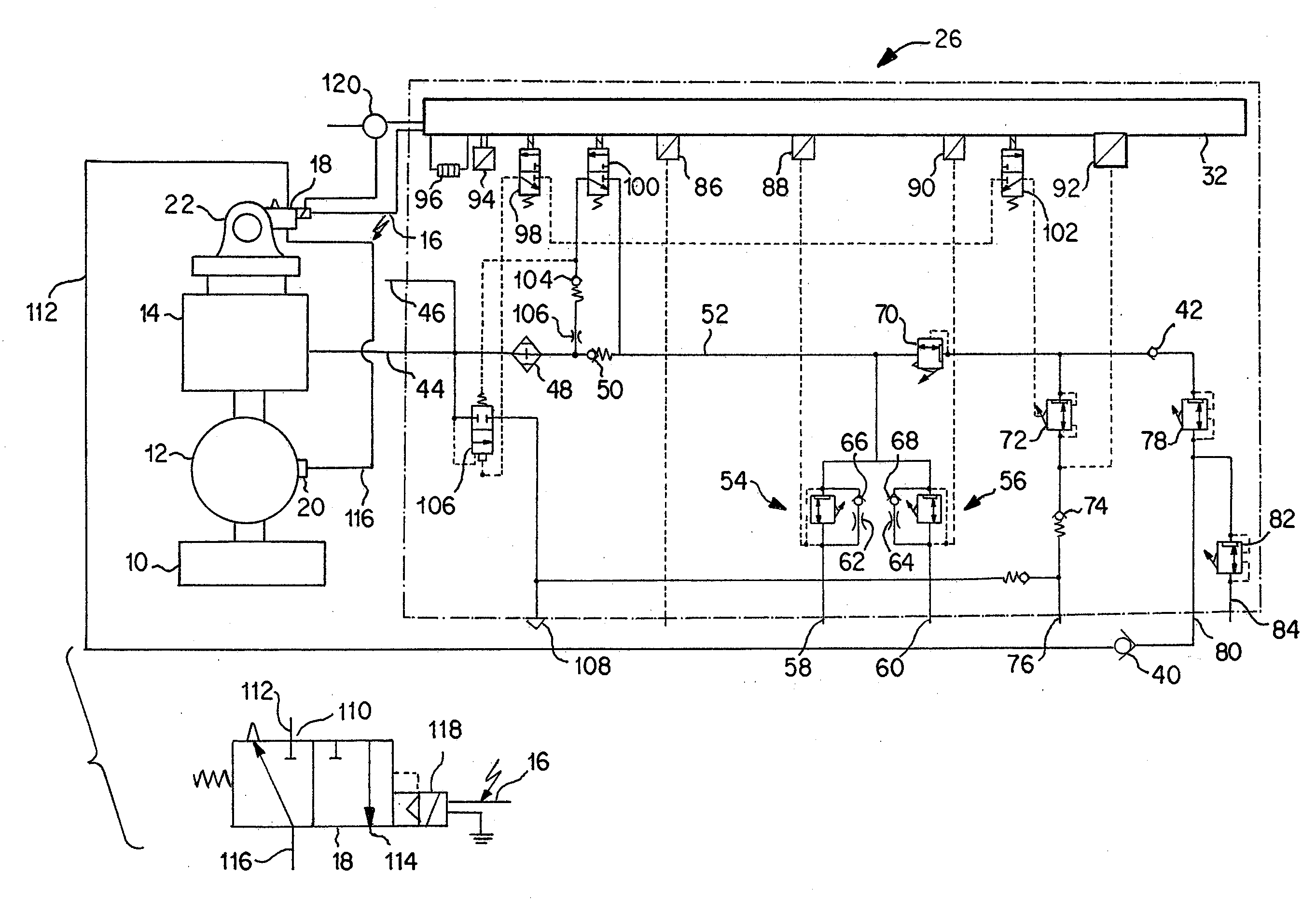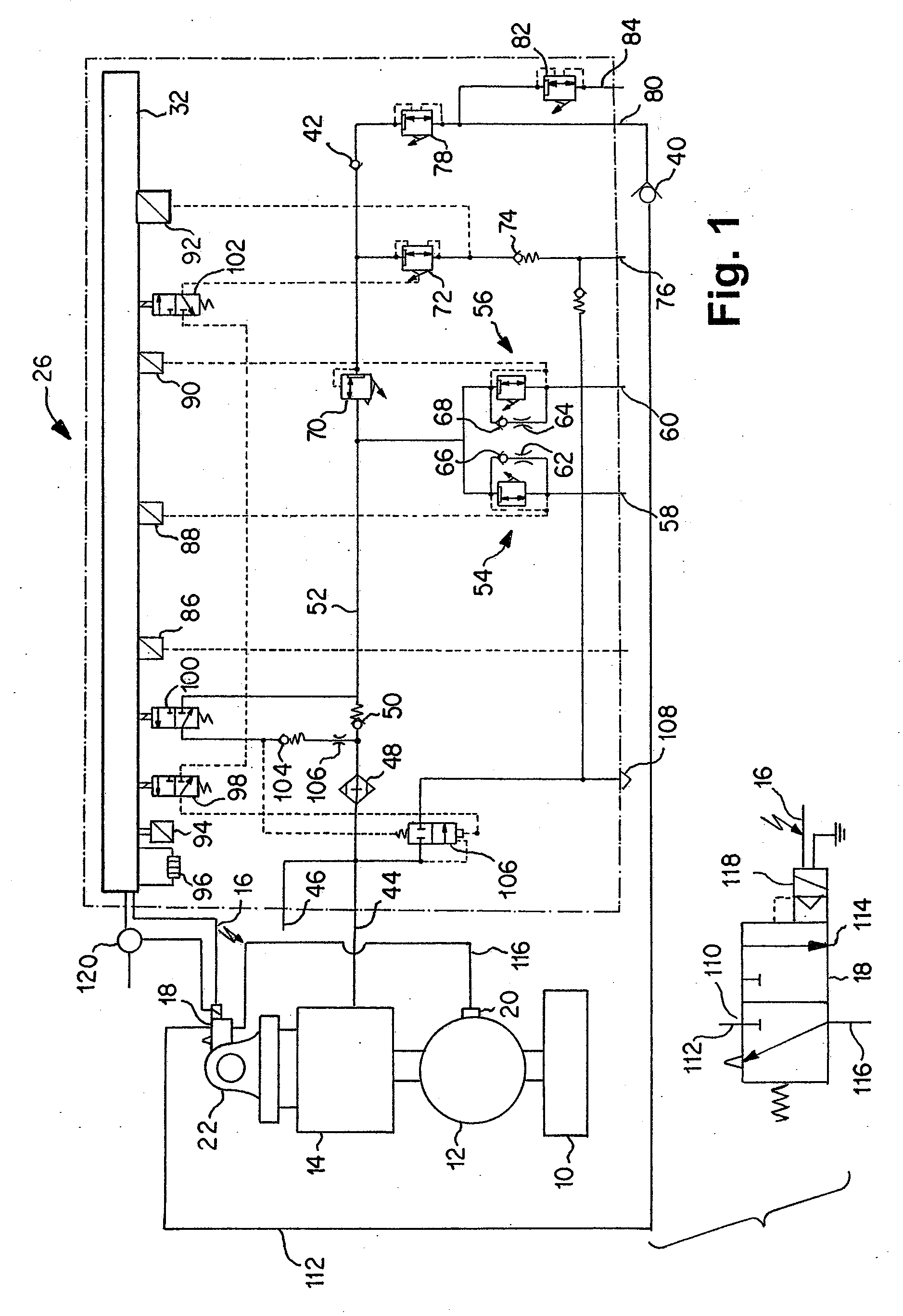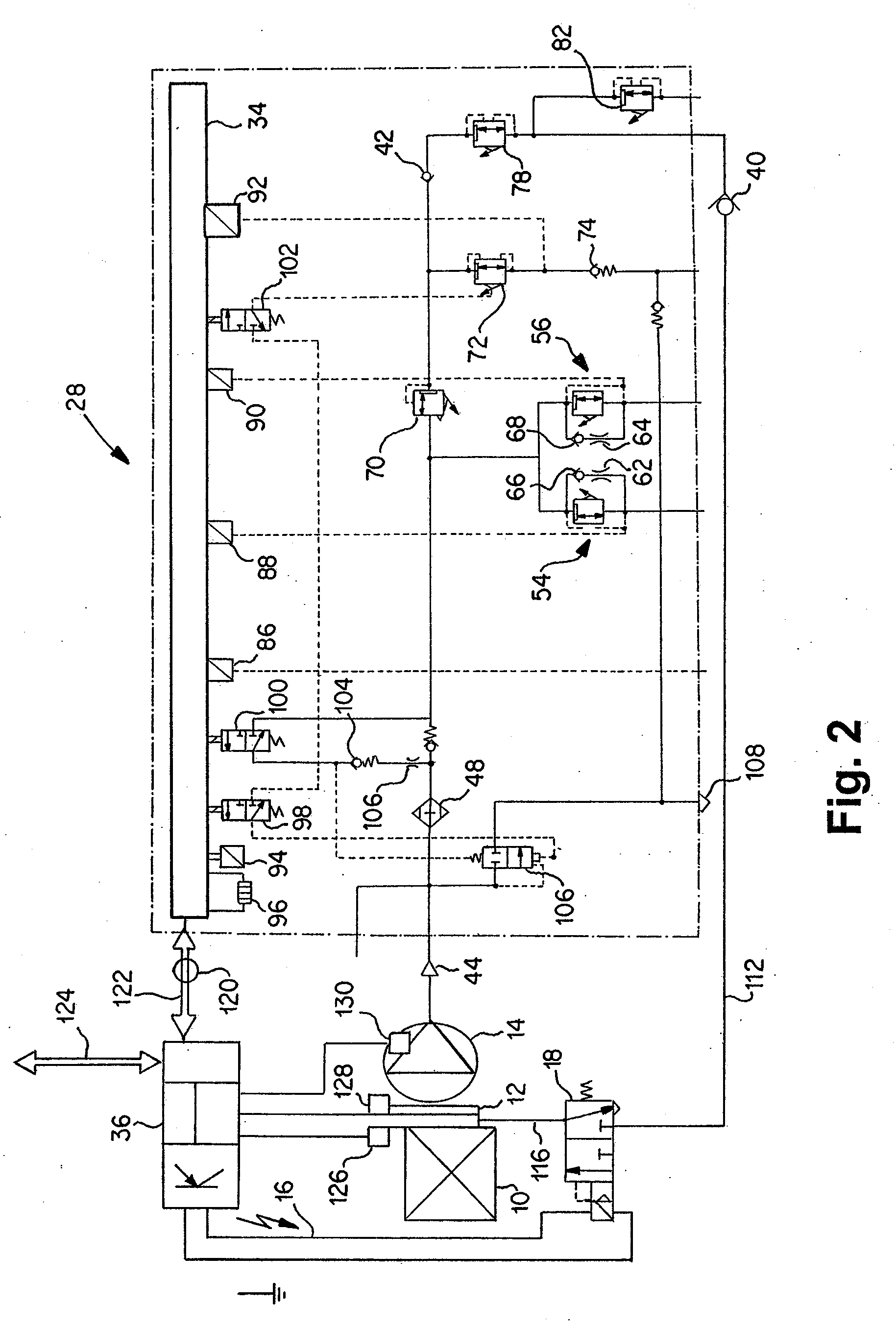Method for Controlling or Regulating the Air Pressure in a Compressed Air Supply Device
- Summary
- Abstract
- Description
- Claims
- Application Information
AI Technical Summary
Benefits of technology
Problems solved by technology
Method used
Image
Examples
Example
DETAILED DESCRIPTION OF THE DRAWINGS
[0023]In the following description of the drawings, the same reference symbols designate identical or comparable components.
[0024]FIG. 1 shows a diagrammatic illustration of a compressed air supply device according to the invention. A compressed air preparation plant 26 is illustrated. By means of this, compressed air supplied is filtered and is distributed to various compressed air consumers. An inlet connection 44 is provided, which is connected to a compressor 14 provided outside the compressed air preparation plant 26. An extraneous filing connection 46 is arranged parallel to the inlet connection 44. The compressed air supplied to one of the inlets 44, 46 is supplied to a filter unit 48 and from there, via a nonreturn valve 50, to a main supply line 52. Arranged in parallel on the main supply line 52 are two overflow valves 54, 56, via which connections 58, 60 for the service brake circuits of the utility vehicle are supplied with compressed ...
PUM
 Login to View More
Login to View More Abstract
Description
Claims
Application Information
 Login to View More
Login to View More - R&D
- Intellectual Property
- Life Sciences
- Materials
- Tech Scout
- Unparalleled Data Quality
- Higher Quality Content
- 60% Fewer Hallucinations
Browse by: Latest US Patents, China's latest patents, Technical Efficacy Thesaurus, Application Domain, Technology Topic, Popular Technical Reports.
© 2025 PatSnap. All rights reserved.Legal|Privacy policy|Modern Slavery Act Transparency Statement|Sitemap|About US| Contact US: help@patsnap.com



